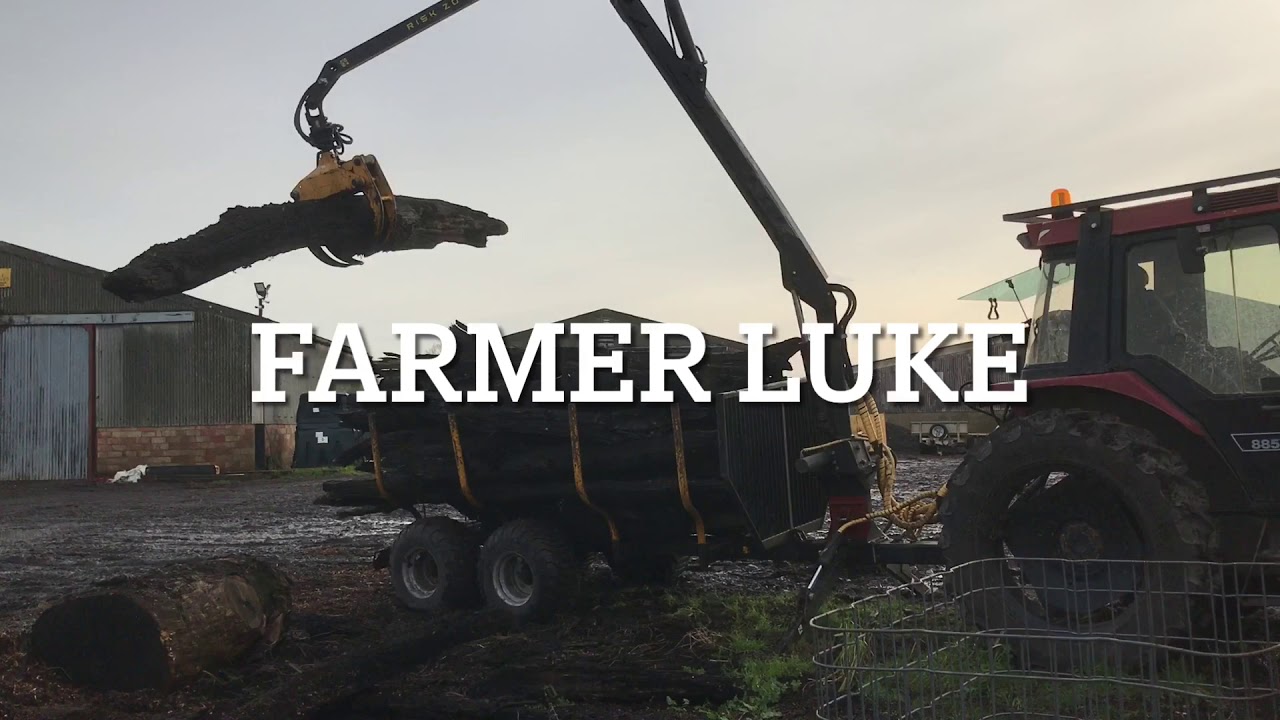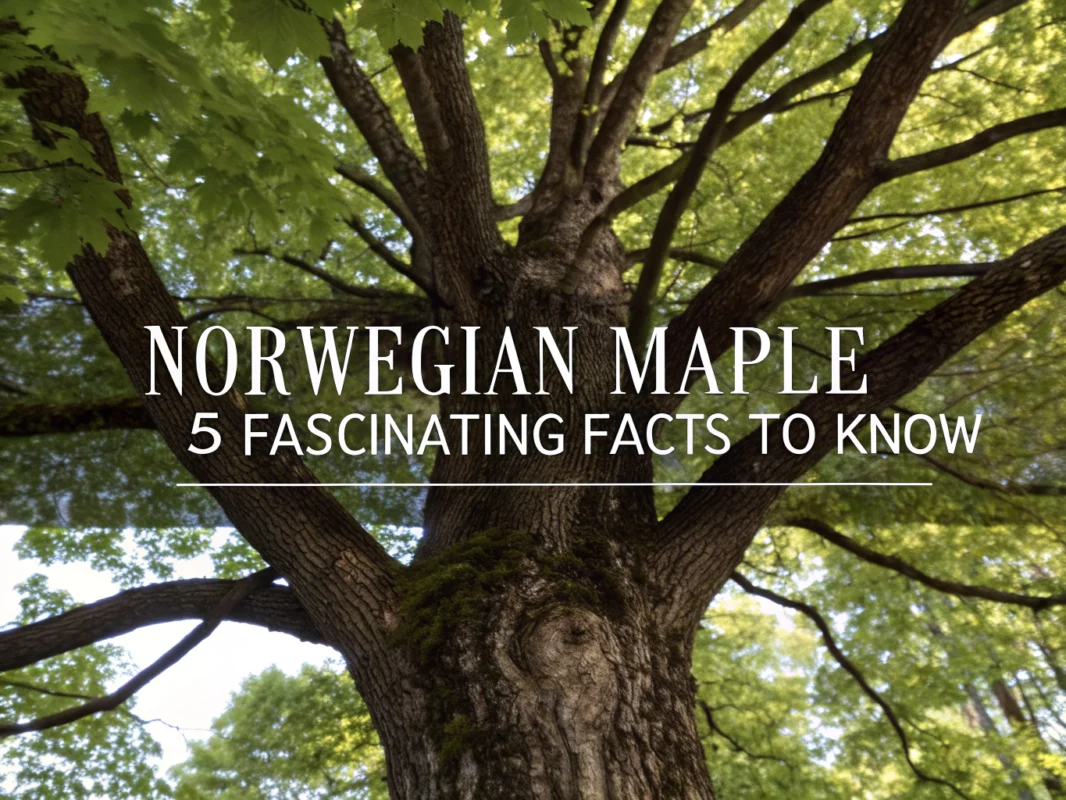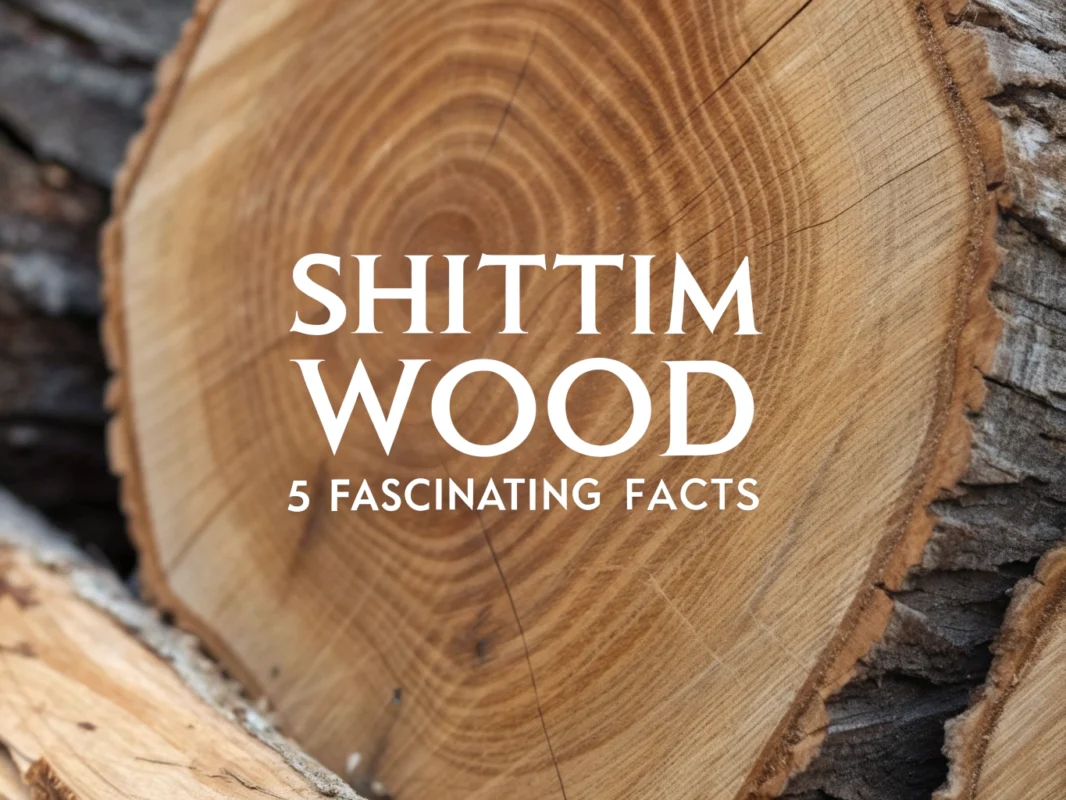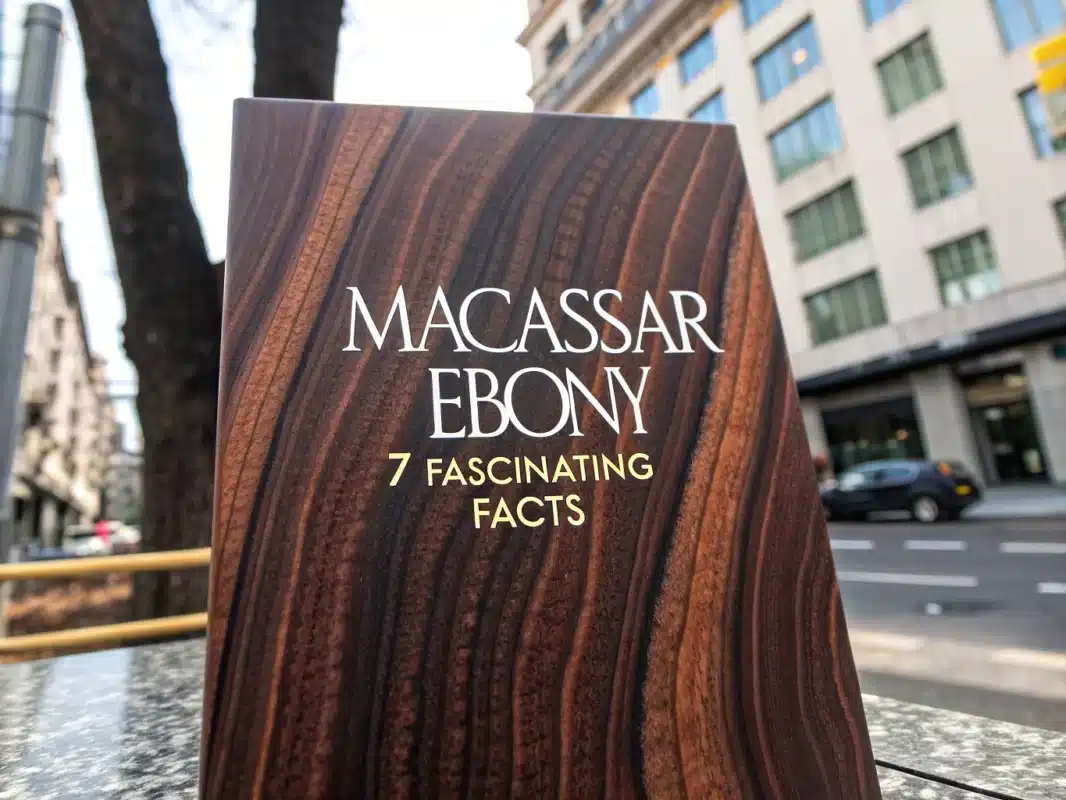
Bog Oak: 5 Fascinating Facts

How old is the wooden pen in your hand? With bog oak, the answer can reach 7,000 years. These oak trunks rested in peat and river mud with little oxygen. Minerals seeped in. The result is bog oak wood with a deep black glow and a firm feel. Makers often call the darkest pieces morta bog oak. Here are five quick facts that show why this ancient timber still thrills today.
Table of Contents
Bog oak is ancient oak preserved in peat, marshes, or river beds, prized for its near-black color and history. This guide explains bog oak wood, how it forms, how it looks, and why makers chase it for premium projects.
What is bog oak wood?
Definition and names
Bog oak is subfossil oak that sat underwater and under peat for millennia; makers also call it morta bog oak or simply bog oak wood. For a clear primer on formation and rarity, see the article What is bog oak?.
Where it’s found
You’ll see most bog oak unearthed from the Fens in eastern England and similar wetlands across Europe. Some logs turn up in river works or peat cutting, while others appear during farm drainage, far from living red oak wood stands today.
Why makers value it
Makers love the deep black tone, the historical story, and the extra heft that helps parts stay stable. Finished work shows a fine glossy sheen that rivals ebonized hardwoods but with richer grain.
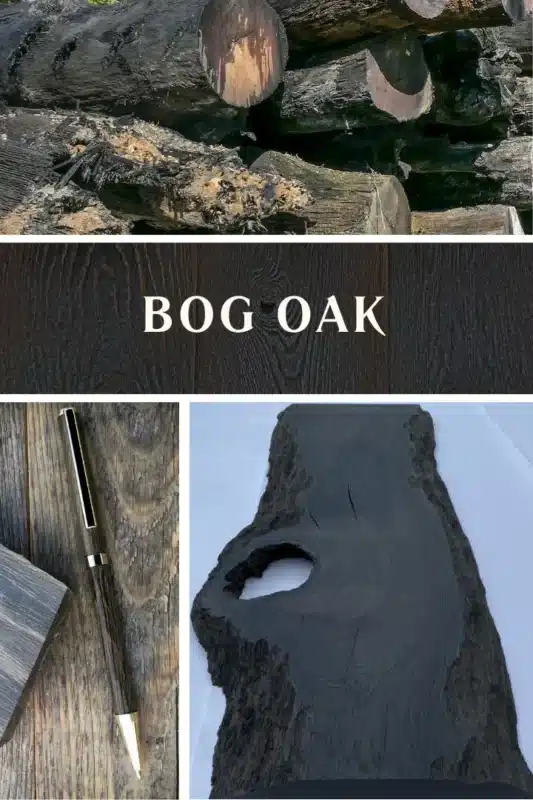
1. Ancient origins of bog oak
2,500–7,000 years
Most workable bog oak dates from roughly 2,500–7,000 years ago, making each board a rare time slice. An overview of excavated trunks and dating appears in The Magic of Materials: Buried Bog Oak.
Post-Ice Age flooding
Rising seas flooded lowland forests, dropping oaks into anoxic peat where decay slowed to a crawl. Over time, silt and peat buried trunks, locking in color changes and dense structure.
Wood as time capsule
Each log holds a record of its watershed chemistry, from mineral traces to seasonal growth rings. Craftspeople often keep offcuts as provenance tokens for clients who value the story.
2. How bog oak forms
Anaerobic preservation
In low-oxygen peat, microbes can’t break wood down at a normal pace, so oak becomes subfossil rather than compost. This slow preservation is outlined in the guide What is Oak Bogwood?.
Tannin–iron reaction
Tannins in oak react with dissolved iron minerals, turning brown timber into chocolate, charcoal, and near-ebony shades. The longer the burial and the richer the iron, the darker the final boards.
Increased density
Mineral uptake and slow maturation add weight and hardness, so tools need sharp edges and firm support. Use fresh abrasives, moderate feed rates, and light passes to avoid tear-out.
3. Bog oak color and character
Color spectrum
Expect tones from silvery gray to bluish-black, muddy green, and the prized deep black. A concise overview of these hues appears in Bog Oak: The Hidden Gem of Nature.
| Attribute | Fresh Oak (e.g., white oak) | Bog oak wood |
|---|---|---|
| Color | Light tan to medium brown | Dark brown to ebony-black |
| Grain look | Straight to wavy | Striking contrasts and darker rays |
| Density feel | Standard hardwood weight | Heavier, “stone-like” heft |
| Tool wear | Moderate | Higher, needs sharp cutters |
| Finish | Natural satin to gloss | High-gloss mirror with fine sanding |
Grain uniqueness
Color bands follow water flow and mineral streaks, so every blank is one-of-a-kind. If you enjoy dramatic figure, compare it with rare burl wood for statement pieces.
Unusual hardness
Many pieces cut like very hard oak; use carbide tools, slow speeds, and wax the tool rest when turning. For tight joinery, pre-drill, clamp firmly, and test finishes on offcuts.

Mini Craft Table Saw – Portable 7-Speed Cutting & Sanding Tool
- Portable saw handles wood, acrylic and metal with adjustable blade depth 0-16 mm and powerful 6000 rpm motor
- Features precision scales on the base and angle plate for accurate cuts
- Includes a flexible shaft for drilling or engraving with a clear safety shield
- Compact and lightweight, great for hobbyists and small workspace use
- Comes with assembly guide and safety notes for switching between functions
Polished glossy finish
Sand through fine grits, then buff with micro-abrasives and oil or shellac to get a deep glass-like gloss. A pore filler helps achieve a piano-black look on flats, while turned parts often need only careful burnishing.
4. Bog oak rarity and uses
Scarcity of usable logs
Only a small share of excavated trunks yields stable, crack-free boards big enough for projects. Basic background on recovery and use sits in Bog-wood.
Historic prestige
Rulers and nobles favored the material for dark, stately presence, and museums still display artifacts with a rich black patina. Collectors treat large, straight boards like fine wine: provenance matters and so does the sawyer.
Modern craft applications
Today, makers pick bog oak wood for objects where contrast and story matter most. Compare its effect with clean-grained options like rift-cut white oak in modern interiors.
- Knife handles, chef tool ferrules, and premium scales
- Fountain pens, pencils, and small turnings
- Accent panels, boxes, and gallery frames
- Furniture details: pulls, inlay, and leg caps
- Audio gear: turntable plinths and control knobs
Board and lumber picks
These two bog oak stock options fit small furniture parts, turning blanks, and one-off accents.

Premium Bog Oak Lumber — 1.6×1.6×15.8 in
- Deep, aged black color with natural patina
- dense, stable hardwood ideal for turning and carving
- pre-cut dimensions ready for project work
- sands and polishes to a smooth, glossy finish
- perfect for knife handles, furniture accents, and collectibles

Large Bog Oak Board — 12.5×1.77×1.18 in
- Generous board size suitable for multiple blanks and larger projects
- morta oak with deep black coloration and natural character
- straight, stable grain reduces warping during work
- pre-cut dimensions minimize prep time
- sands and finishes to a rich, high-gloss surface
5. Morta bog oak appeal
What morta means
Morta refers to subfossil wood that hasn’t turned to stone; it sits between fresh timber and fossil. For color decisions on new projects, compare morta accents with red vs. white oak panels.
Durable and pest-resistant
Once dried and finished, morta bog oak resists pests and keeps its look for generations. Seal end grain well and avoid sudden humidity swings to protect large parts.
Pen makers’ favorite
Pen turners like its dense body, crisp threads, and deep shine under CA or oil-wax finishes. Use sharp barrel trimmers, slow mandrel speed, and polish through micro-mesh for a mirror body.
Pen blank picks
These pen blanks offer consistent sizing for kits and showpiece builds.

Ancient Bog Oak Pen Blanks — 5-Pack
- Rich, dark grain with unique aged character in each blank
- uniform sizing for easy pen-turning setup
- accepts glue and finishes cleanly
- sands to a high-gloss surface for a refined look
- great for custom pens and small craft projects

Bog Oak Pen Blanks — 5-Pack Value Set
- Five matching blanks for consistent pen builds
- weathered black patina adds vintage appeal
- pre-cut, ready for lathe turning
- easy to sand and finish to a deep shine
- ideal for gifts, custom pens, and hobby projects

Certified Ancient Bog Oak Pen Blank
- Certified authentic ancient bog oak with documented origin
- striking deep-black appearance and historic character
- well-seasoned for enhanced dimensional stability
- sized for pen making and small turnings
- polishes beautifully for a premium finish
For contrast in casework, try quartered grain in modern builds and pair with quarter-sawn oak or lean lines in rift-cut white oak. Clean designs let the black figure speak without clutter.
If you’re exploring color matches, look at pale panels in white oak wood that set off morta’s depth. That light-dark pairing makes the grain drama pop in any room.
FAQs
What Is Bog Oak And How Is It Formed?
Bog Oak Is Subfossil Oak Wood Preserved For Centuries In Peat Bogs And Waterlogged Soils. Low Oxygen, Cool Temperatures, And High Acidity Slow Decomposition, Allowing Tannins To Concentrate And Sometimes Minerals To Penetrate The Fibers; Over Time The Wood Darkens And Stabilizes Into The Dense, Deep-Brown To Black Material Known As Bog Oak.
How Old Is Bog Oak Typically?
Age Varies Widely — Bog Oak Can Be Several Hundred To Several Thousand Years Old. Many European Specimens Date From Around 1,000 To 6,000 Years Ago, Though Some Pieces May Be Older. Precise Age Is Determined By Scientific Methods Such As Radiocarbon Dating.
What Are The Uses Of Bog Oak In Woodworking?
Woodworkers Use Bog Oak For High-End Furniture, Veneers, Carvings, Turned Objects, Knife Handles, Jewelry, And Inlays Because Of Its Rich Dark Color, Fine Grain, And Stability. It Polishes Beautifully But Is Often Limited In Supply, So Craftspeople May Stabilize It And Use Sharp Tools And Careful Techniques When Working It.
How Can You Identify Authentic Bog Oak?
Authentic Bog Oak Typically Shows A Deep, Layered Dark Color That Penetrates The Grain Rather Than A Surface Stain, Retains Visible Ring Or Grain Patterns, And Feels Dense And Heavy. To Be Sure, Check Provenance, Request Seller Documentation, Or Use Scientific Tests (e.g., Carbon Dating Or Microscopic Wood Anatomy), Since Some Wood Is Artificially Dyed Or Treated To Mimic Bog Oak.
Why Is Bog Oak Considered Valuable?
Bog Oak Is Valuable Due To Its Rarity, Great Age, Unique Aesthetic (Deep Dark Tones And Fine Grain), Historical Interest, And The Labor-Intensive Recovery And Preparation Process. These Factors Make It Highly Sought After By Collectors And High-End Artisans.
